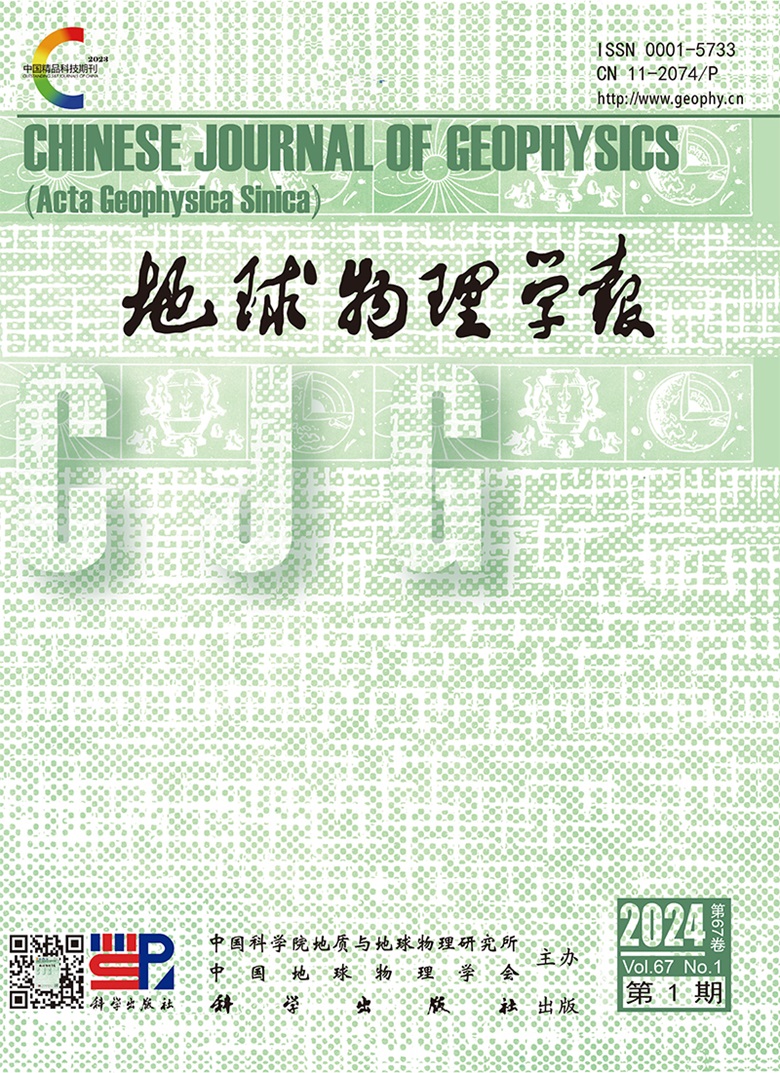Statistical analysis of the ionosphere response to the CIR and CME in Mid-latitude regions
IF 1.4
4区 地球科学
Q3 GEOCHEMISTRY & GEOPHYSICS
引用次数: 6
Abstract
The study of the ionosphere responses to Corotating Interaction Regions(CIRs)and Coronal Mass Ejections(CMEs)got much attentions in rencent years.With the comparison of different types of ionosphere response caused by different disturbance sources from solar activity and interplanetary solar wind,morphological changes and physical process of ionospheric storms can be understood more impressively and comprehensively.It provides a possibility to predict ionospheric disturbance states according to different solar wind conditions in advance as well.GPS-TEC data at a mid-latitude station(131°E,35°N)are used to analyze the ionosphere response during geomagnetic disturbances induced by 109 CIRs and 45 CMEs over the period 2001 to 2009.Firstly,the TEC difference are determined to achieve the information of ionospheric positive or negative storms during the CIR and CME events.The definition of a ionosphericstorms is relative TEC greater than or equal to 15% and persisting for more than 4hours;Secondly,year dependence,seasonal dependence,time delay between ionospheric storms and geomagnetic storms,geomantic storm intensity dependence and time duration of ionospheric storms are analyzed in detail.Analysis results indicate that the types of ionospheric storms vary in different phases of a solar cycle.CIR-driven positive and positive-negative storms are more likely to occur in the declining phase of the solar cycle,while negative phase storms more in solar maximum and negative-positive storms mainly in solar minimum.CME-driven positive storms and negative storms mostly occur in solar maximum.There is no remarkable seasonal difference for the occurrence of different types of ionospheric storms except the positive-negative storms most likely to occur in summer.The time delays between geomagnetic disturbances and the start time of ionospheric storms are-6to 6hours in general,but CIR-driven ionopsheric storms involve in a wider range with a time delay of-12 to 24hours and CME-driven storms is delayed from-6to6 hours.Moreover,for CIR-driven ionospheric storms,positive and negative storms mostly occur in main phase of magnetic storms,positive-negative storms mostly in initial and main phase,and negative-positive storms mainly in initial phase.For CME-driven storms,positive,negative and positive-negative storms basically occur in main phase.Our investigation also demonstrates certain correlation between the types of ionospheric storms and the AE maximum indices.Ionopsheric negative storms often occur in stronger geomagnetic activity,with the AE maximum intensity between 800 to 1200nT while positive-negative storms tend to occur with AE maximum intensity higher than 400 nT.Compared to CIR driven storms,AE maximum value during CME driven storms is higher.The duration of CIR-driven storms is longer(1to 6days)than that of CME-driven storms(1to 4days).The ionosphere response to interplanetary conditions contribute to the study the ionospheric disturbance.Statistical analysis of the ionosphere response to the CIR and CME in Mid-latitude regions indicate that there are some certain correlations among ionospheric changes,solar activities,interplanetary conditions and geomagnetic conditions.The ionospheric storms could be predicted more accurately and meticulously by distinguishing the different types of interplanetary conditions.中纬度地区电离层对CIR和CME响应的统计分析
电离层对自旋相互作用区(CIRs)和日冕物质抛射(cme)的响应研究近年来备受关注。通过比较太阳活动和行星际太阳风等不同扰动源引起的不同类型电离层响应,可以更深刻、全面地了解电离层风暴的形态变化和物理过程。这也为根据不同的太阳风条件提前预测电离层扰动状态提供了可能。利用某中纬度站(131°E,35°N)的GPS-TEC资料,分析了2001 ~ 2009年109次太阳辐射和45次日冕物质抛射引起的地磁扰动对电离层的响应。首先,确定TEC差值,获得CIR和CME事件期间电离层正或负风暴的信息;电离层风暴的定义是相对TEC大于或等于15%且持续时间大于4h;其次,详细分析了电离层风暴的年依赖性、季节依赖性、电离层风暴与地磁风暴的时间差、地磁风暴强度依赖性和电离层风暴的持续时间。分析结果表明,电离层风暴的类型在太阳活动周期的不同阶段有所不同。由cir驱动的正、负相风暴多发生在太阳活动周期的衰退期,负相风暴多发生在太阳活动极大期,负正相风暴主要发生在太阳活动极小期。cme驱动的正风暴和负风暴主要发生在太阳极大期。不同类型电离层风暴的发生没有明显的季节差异,除了最可能发生在夏季的正-负电离层风暴。地磁扰动与电离层风暴开始时间之间的时间延迟一般为6 ~ 6小时,但由太阳辐射引起的电离层风暴涉及的范围更广,延迟时间为12 ~ 24小时,cme引起的电离层风暴延迟时间为6 ~ 6小时。此外,对于由cir驱动的电离层风暴,正、负风暴主要发生在磁暴的主相,正、负风暴主要发生在磁暴的初始和主相,负、正风暴主要发生在初始相。cme驱动的风暴主要有正、负、正负三种形式,主要发生在主相。研究还表明,电离层风暴类型与最大声发射指数之间存在一定的相关性。电离层负风暴多发生在地磁活动较强的时期,最大声发射强度在800 ~ 1200nT之间,而正负风暴多发生在最大声发射强度大于400nt的时期。与CIR驱动的风暴相比,CME驱动的风暴的声发射最大值更高。cir驱动的风暴持续时间(1 ~ 6天)比cme驱动的风暴持续时间(1 ~ 4天)长。电离层对行星际条件的响应有助于电离层扰动的研究。对中纬度地区电离层对CIR和CME响应的统计分析表明,电离层变化与太阳活动、行星际条件和地磁条件之间存在一定的相关性。通过区分不同类型的行星际条件,可以更准确和细致地预测电离层风暴。
本文章由计算机程序翻译,如有差异,请以英文原文为准。
求助全文
约1分钟内获得全文
求助全文

 求助内容:
求助内容: 应助结果提醒方式:
应助结果提醒方式:


